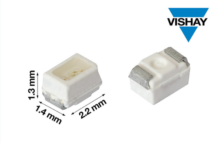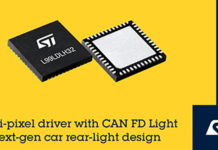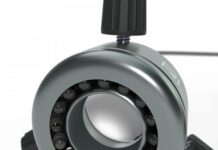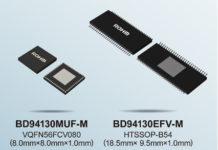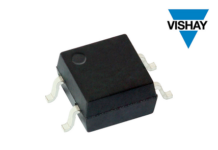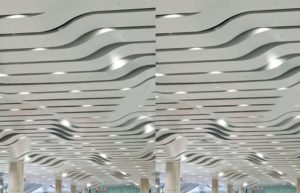
Over the last few blogs, I’ve given readers pointers on virtually every aspect of potting and encapsulation resins, ranging from their formulations and special properties to their applications, benefits and limitations. It’s probably high time, therefore, to take a step back from the do’s and don’ts and focus instead on how these resins are bringing very real benefits to practical electronic and electrical engineering applications; and a good starting point is to look at the special requirements of an industry that is enjoying explosive growth: LED lighting.
With this rapid growth has come a pressing need among LED lighting manufacturers to make the right selections where potting and encapsulation are concerned, in order to maximise the life and performance of LED lighting units. In short, this comes down to two things: recognising the importance of proper thermal management – including measures to ensure maximum heat dissipation from LED luminaires and lighting assemblies – and understanding how correct resin product selection can have significant impacts upon the aesthetics, ambience, lighting qualities and long-term environmental protection of LED lighting assemblies.
Offering a more efficient and longer-life alternative to halogen, incandescent and fluorescent lighting systems for both interior and exterior applications, as well as providing greater freedom of expression in terms of product design and installation, LED lighting has become a market phenomenon. Expected to grow into a $70 billion industry by 2020, and due to turn its market share from a current 18% to 70% in a little over five years, the LED industry is increasingly turning to companies like mine for solutions to the sorts of problem areas I’ve outlined above. And we have not been slow in responding, as I hope to demonstrate with some recent projects undertaken for a couple of prominent international market players.
The French company Odeli (On Demand Lighting) are a young, dynamic company who provide specialist bespoke LED lighting solutions, they contacted us after receiving an urgent lighting contract for an outdoor sports stadium. They required a resin to encapsulate their design as quickly as possible, it had to protect the LED’s from the environment (rain, wind, dust, etc) yet be suitable for use in their production process. There were also aesthetic considerations, a diffuse light was required. The use of a hazy resin can give a diffuse light, due to the particles inside the resin causing the light to be scattered, rather than being emitted as a single continuous beam. It was for just this sort of application the UR5635 was developed.
The timeline for the project was tight as there was only 3 months from the award of the contract to the opening of the stadium, which was for the European Games in Baku, Azerbaijan. We were able to supply samples the next day so that they could complete their own 4 week test program. Working with Odeli, we were able to meet their requirements both in terms of product performance, but also to supply the resin for production within a 3 week delivery slot, in fact we delivered the required material ahead of schedule. Once we had full specifications and an explanation of requirements with regard to the encapsulant for the stadium lighting, we invited Odeli to carry out some tests on our UR5635 transparent hazy polyurethane resin based on the real conditions in which the lighting was destined to operate. UR5635 was duly tested and approved for the application, and the appropriate processes installed – all within one month of our preliminary meeting. Odeli required large quantities of resin for this project and fortunately we were in a position to satisfy that demand at short notice, which went a long way to helping them meet their rather tight deadline.
UR5635 is a two-part, semi-rigid resin material formulated with a ‘hazy/cloudy’ appearance. The product is ideal for decorative applications that need environmental protection, and is particularly suitable for lighting applications where there is a desire for a dispersive lighting effect. As for the Odeli project, it achieved the desired effect, producing an excellent level of luminosity combined with a very pleasing aesthetic finish. When the 6000 athletes, from 50 countries, were performing at their peak in Baku, Electrolube resins were likewise performing well in illuminating their achievements.
As previously mentioned, the use of LED’s has opened up a world of different possibilities for designers as to how to use lighting in different ways. Our Indian colleagues had an urgent call from Rockforest Technologies India, who were looking for a potting resin to protect a decorative strip lighting for outdoor use in a shopping mall complex. The company not only needed to meet a very tight project deadline but also achieve a specific ‘neutral white’ (4,000K) colour from the lighting – and there was little or no room for manoeuvre on this. In addition, the material had to cope with both outdoor conditions as well as the footfall of pedestrians, as the lighting was planned for installation at ground level under a walkway. No pressure then!
Our Indian office jumped into action and conducted some initial trials, potting the strip luminaires to the specified depth of 5.5mm using our UR5634 semi-rigid, optically clear polyurethane resin which, being highly UV resistant, is especially useful as an encapsulant for applications exposed to direct sunlight.
Unfortunately, the resin caused a colour shift from the specified 4,000K (neutral white) to ‘cool white’ (6,500K). Rockforest was under considerable pressure to solve this problem; apart from the fact that the 4,000K colour was non-negotiable, their customer requested that a new on-spec reference sample be made available for re-testing in just 24 hours. Our General Manager of Electrolube India, Padmanabha Shaktivelu sought advice from our UK based technical support team who subsequently suggested two different approaches that Rockforest might consider in order to solve the problem.
The first was a recommendation that they use an LED that provided a colour temperature below the specified colour temperature – in this case, one operating in the 2,500K to the 3,000K range. By potting these with the UR5634 resin to the specified 5.5mm depth, it potentially could bring the light back to the desired colour. The second option was that Rockforest assesses the amount and type of resin they were using for this project to see if a thinner layer of resin over the top of the LED array would reduce the colour shift effect.
In the end, Padmanabha recommended that Rockforest switch to our UR5635 semi-rigid ‘hazy/cloudy’ polyurethane resin, which provided the required environmental protection as well as offering a useful light dispersing property. Indeed, the diffused light produced by this resin meant that an additional diffuser medium was no longer necessary, allowing the customer to save costs while achieving the required aesthetic appearance and, through trials with various resin potting depths, the specified colour temperature, and achieved to a tight deadline!
So, there are a couple of examples hopefully showing how resins are bringing very real benefits to practical electronic and electrical engineering applications, more notably here for LED applications and how important it is to work closely with your supplier so you have the ability to move fast when circumstances demand it.
By: Alistair Little



